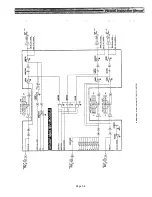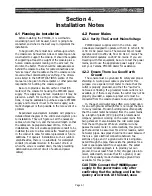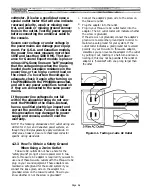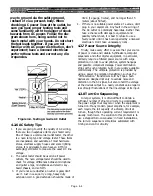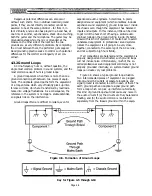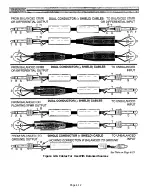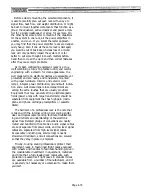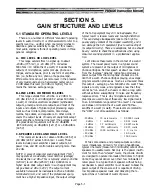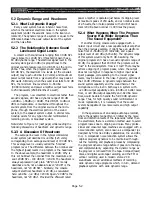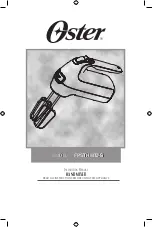
ment. If one of these conditions is not met, then instead
of going directly to earth ground and disappearing,
these circulating ground loop noise currents (which act
like signals) travel along paths that are not intended to
carry signals. The currents, in turn, modulate the
potential of the signal-carrying wiring (they are super-
imposed on the audio), producing hum and noise
voltages that cannot easily be separated from program
signals by the affected equipment. The noise is thus
amplified along with the program material.
Figure 4-6. Single-Point Grounding
4.3.3 Basic Grounding Techniques
We will discuss four basic approaches to handling
grounds within audio systems: single point, multiple
point, floating, and telescoping shield. Each has specific
advantages in different types of systems.
Figure 4-6 illustrates the single-point grounding
principle. Chassis ground in each individual component
is connected to earth; signal ground is carried between
components and connected to earth at one central point.
This configuration is very effective in eliminating line
frequency hum and switching noise, but is most easily
implemented in systems (or subsystems) that remain
relatively fixed. Single point grounding is very often
used in recording studio installations. It is also effective
in the wiring of individual equipment racks. It is almost
impossible to implement in complex, portable sound
reinforcement systems.
Multiple point grounding is shown in Figure 4-7.
This situation is common in systems that use unbal-
anced equipment having the chassis connected to signal
ground. It has the advantage of being very simple in
practice, but it is not very reliable – particularly if the
connection configuration of the system is changed
frequently. Multiple point grounding systems which
include unbalanced equipment are inherently rife with
ground loops. Hum and noise problems can appear and
Figure 4-7. Multiple-Point Grounding
disappear unpredictably as pieces of equipment are
inserted or removed. When they appear, problems are
very difficult to isolate and fix. Multiple point ground
systems that employ balanced circuits with properly
designed equipment may present no special noise
problems.
Figure 4-8. Floating Ground Connections
Figure 4-8 shows the floating ground principle. Note
that signal ground is completely isolated from earth.
This scheme is useful when the earth ground system
carries significant noise, but it relies on the equipment
input stages to reject interference induced in cable
shields.
The principle of telescoping shields is illustrated in
Figure 4-9. This scheme is very effective in eliminating
ground loops. If shields are connected only to earth,
unwanted signals that are induced in them can never
enter the signal path. Balanced lines and transformers
Figure 4-9. Telescoping Shield Connections
Page 4-7
Summary of Contents for PM4000
Page 1: ...PROFESSIONAL AUDIO MIXING CONSOLE PM4000 OPERATING MANUAL YAMAHA ...
Page 2: ...PM4000 OPERATING MANUAL ...
Page 7: ...Section 1 Introduction ...
Page 11: ...Section 2 Brief Operating Instruction ...
Page 47: ...Section 3 Specifications ...
Page 51: ...Dimensional Drawings PM4000 Console all versions Page 3 4 ...
Page 52: ...Page 3 5 ...
Page 53: ...Page 3 6 PM4000 Console Rear Profiles ...
Page 54: ...Module Block Diagrams See back of the manual for overall system block diagram Page 3 7 ...
Page 55: ...Page 3 8 ...
Page 56: ...Page 3 9 ...
Page 57: ...Page 3 10 ...
Page 58: ...Page 3 11 ...
Page 59: ...Page 3 12 ...
Page 60: ...Section 4 Installation Notes ...
Page 72: ...Figure 4 13 Cables For Use With Balanced Sources Page 4 12 ...
Page 79: ...SECTION 5 Gain Structure and Levels ...
Page 82: ...Figure 5 1 Dynamic Range and Headroom in Sound Systems Page 5 3 ...
Page 86: ...Section 6 Optional Functions ...
Page 106: ...Section 7 Operating Notes and Hints ...
Page 119: ...Section 8 Applications ...
Page 127: ...Section 9 Maintenance ...
Page 131: ......
Page 132: ...YAMAHA VN02300 ...




